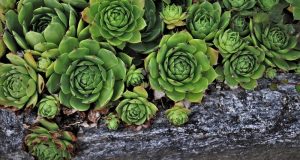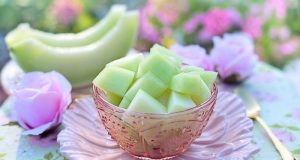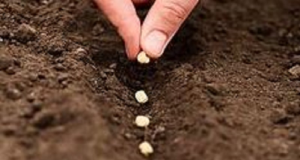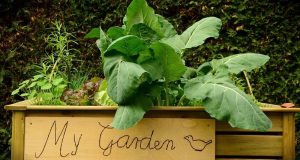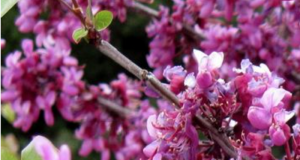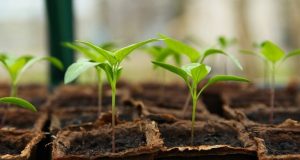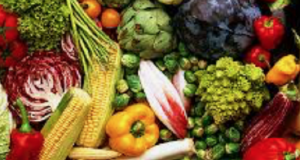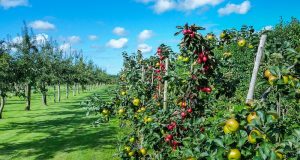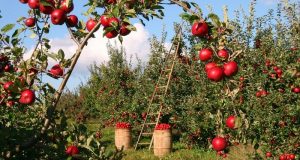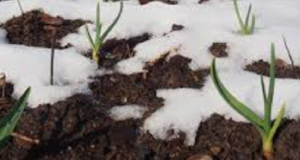By Bob Labozetta (UC Master Gardener, Mariposa) We are once again living through a drought year in the Sierra Nevada foothills. As such, it is a good idea to revisit and remind ourselves of the techniques of waterwise landscaping that is otherwise known as drought-tolerant landscaping or xeriscaping. There are basic principles of waterwise landscaping 1. Planning/Design requires making appropriate ...
Read More »Search Results for: Mariposa Master Gardener
Over the Garden Fence: Growing Melons
By Bob Labozetta (UC Master Gardener, Mariposa) Sweet melons are cucurbits, along with cucumbers, pumpkins, and squash. They similarly enjoy a long, warm summer — something we have plenty of in the Sierra foothills. Here, they can be directly seeded in fertile, loamy soil that has reached at least 65℉ – 70℉. You can plant 6 seeds in small hills, ...
Read More »Over the Garden Fence: Direct Seeding
By Bob Labozetta (UC Master Gardener, Mariposa) Some plants just don’t lend themselves to indoor seeding and later transplanting. They prefer to start and finish in the same place. This is usually due to having a delicate root system. Beans, beets, carrots, corn, cucumbers, lettuce, melons, peas, radish, scallions, spinach, squash, swiss chard, turnips, zucchini prefer direct seeding. There are ...
Read More »Over the Garden Fence: Multiple Raised Bed Options
By Bob Labozetta, UC Master Gardener, Mariposa Raised garden beds generally yield more produce than traditional gardens. What’s more, the tools needed to build and maintain raised beds can be limited to a garden fork, a rake, a shovel, and a hand trowel. The goal is to create a bed of loose, fertile soil that you never step on. The ...
Read More »Over the Garden Fence: Adding Native Plants in Spring
By Ron Allen, UC Master Gardener, Mariposa County Although autumn is generally the best time to add native plants to your landscape, spring is the next best time. Choosing a planting site is important. Fire-prone plants such as manzanitas, pines and plants with resinous leaves and stems should be located well away from structures. Toyon and Redbud are fire-resistant, look ...
Read More »Over the Garden Fence: Spring Seed Starting
By Bob Labozetta (UC Master Gardener, Mariposa) Starting plants from seeds can save you money, give you the option of trying interesting varieties, and bring you closer to Mother Nature’s methods of propagation. Different seeds have different germination rates, so refer to seed catalog or seed packet directions to determine when and how to start your seeds. Visit http://cemariposa.ucanr.edu/Master_Gardener for ...
Read More »Over the Garden Fence: What Vegetables Should I Grow?
Beginning vegetable gardeners are often stymied about what vegetables to grow in their gardens. The general rule of thumb is to pick easy-to-grow varieties that you enjoy eating. California has a unique Mediterranean climate that is suitable for growing many types of vegetables throughout the year. In cooler northern climates, most crops are grown in the late spring and summer. ...
Read More »Over the Garden Fence: Bare Root Planting Techniques
By Bob Labozetta (UC Master Gardener, Mariposa) December through March is the time to plant fruit and nut trees. Bare root trees are less expensive, transport easily and acclimate best to native soils. Once you’ve chosen your variety of bare root tree, it’s time to plant. Choose a site that gets a minimum of six to eight hours of sunlight ...
Read More »Over the Garden Fence: Selecting Fruit Trees
By Bob Labozetta (UC Master Gardener, Mariposa) December to March is the best time to plant fruit and nut trees here in California. Selecting appropriate fruit trees, however, can be confusing. Impulsive purchases can lead to disappointment, particularly in the foothills where not every variety grows well. The key to success when it comes to fruit and nut varieties is ...
Read More »Over the Garden Fence: Six Winter Vegetables
By Bob Labozetta (UC Master Gardener, Mariposa) It’s cold outside now, but there are still options for the ambitious vegetable gardener. Consider planting these six winter vegetables. Winter lettuce selections include hardy varieties that grow easily throughout the cold months here. Direct sow lettuce seeds from mid-August to mid-September. Beyond those dates, you can sow seeds indoors in seedling trays ...
Read More »
